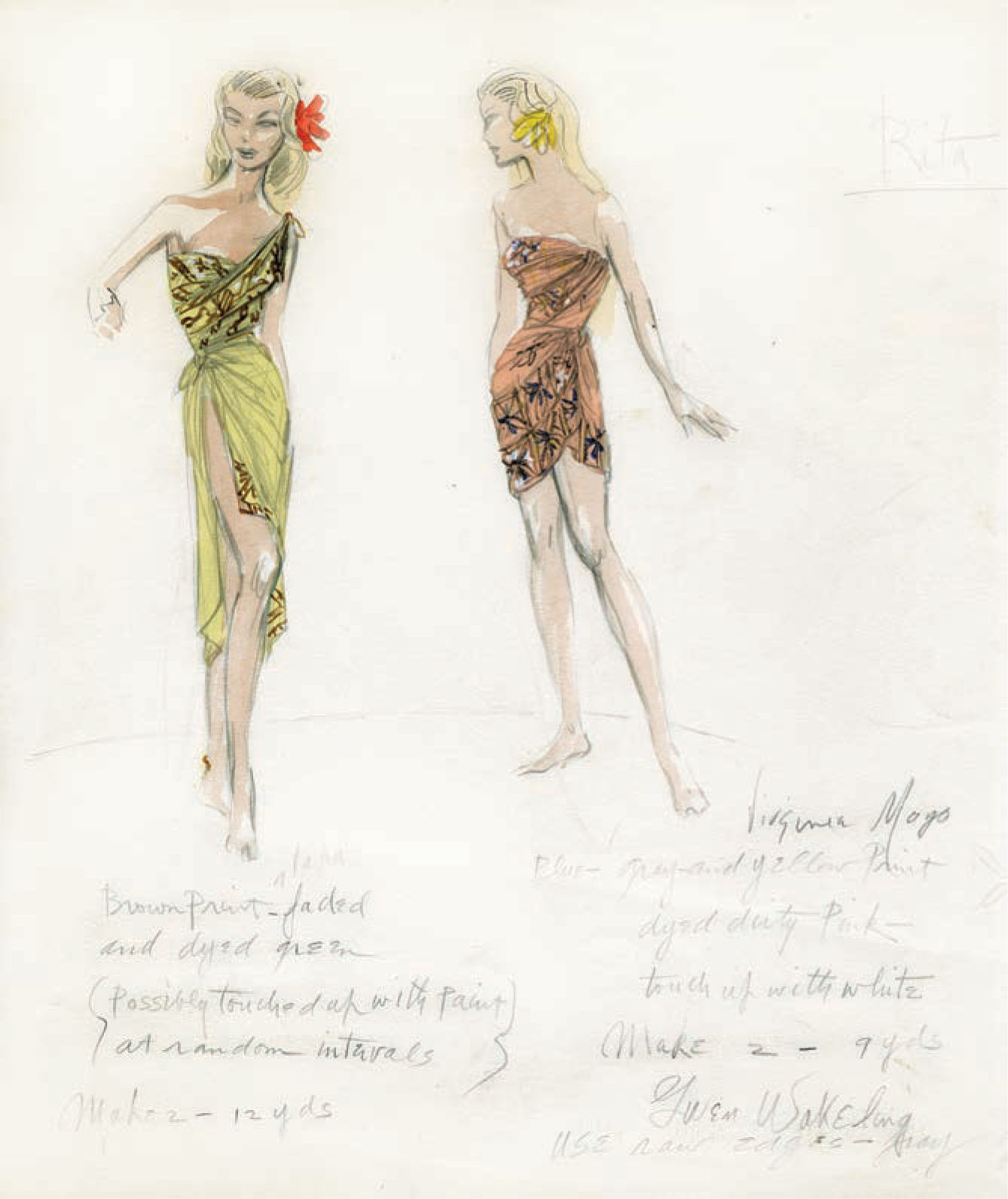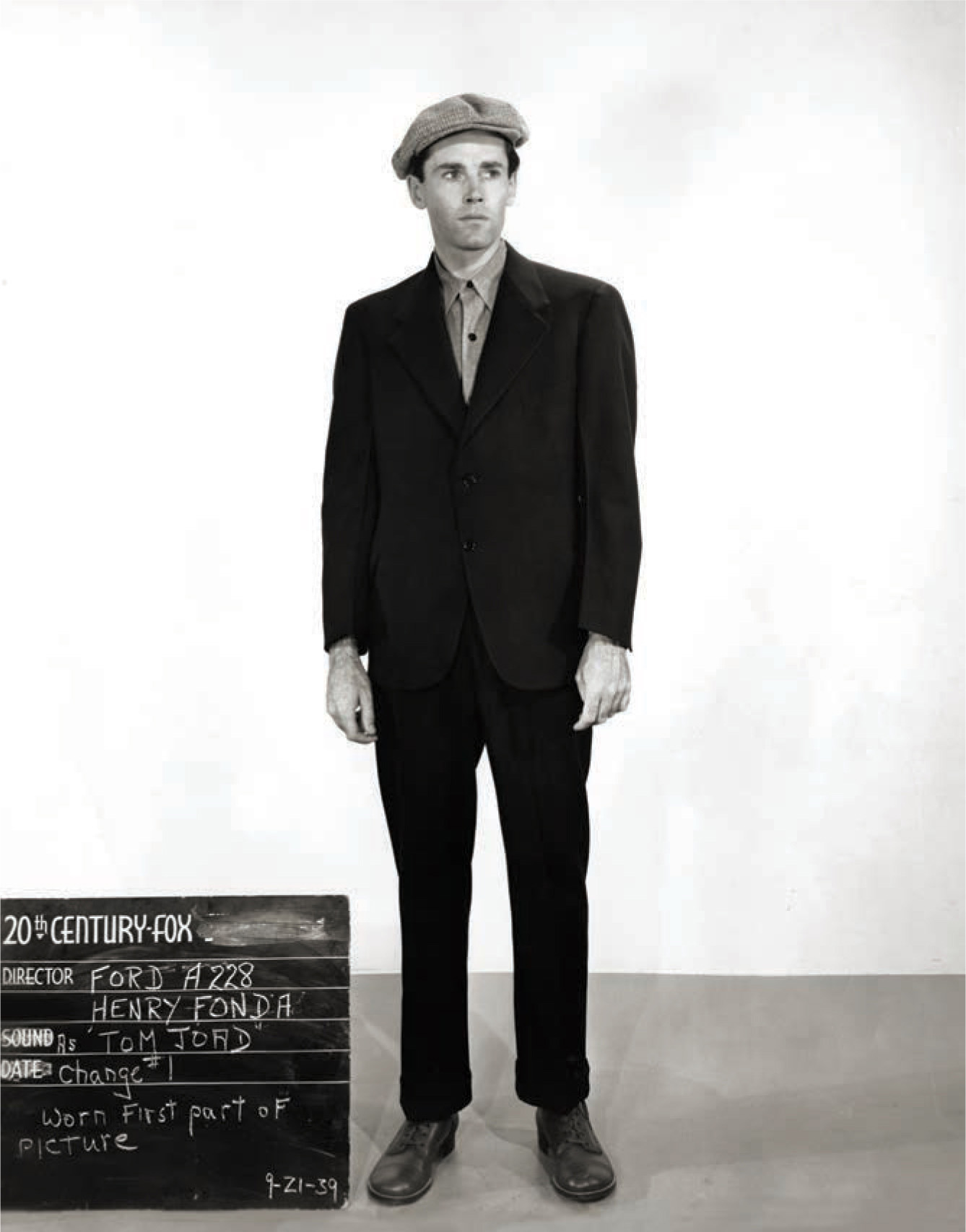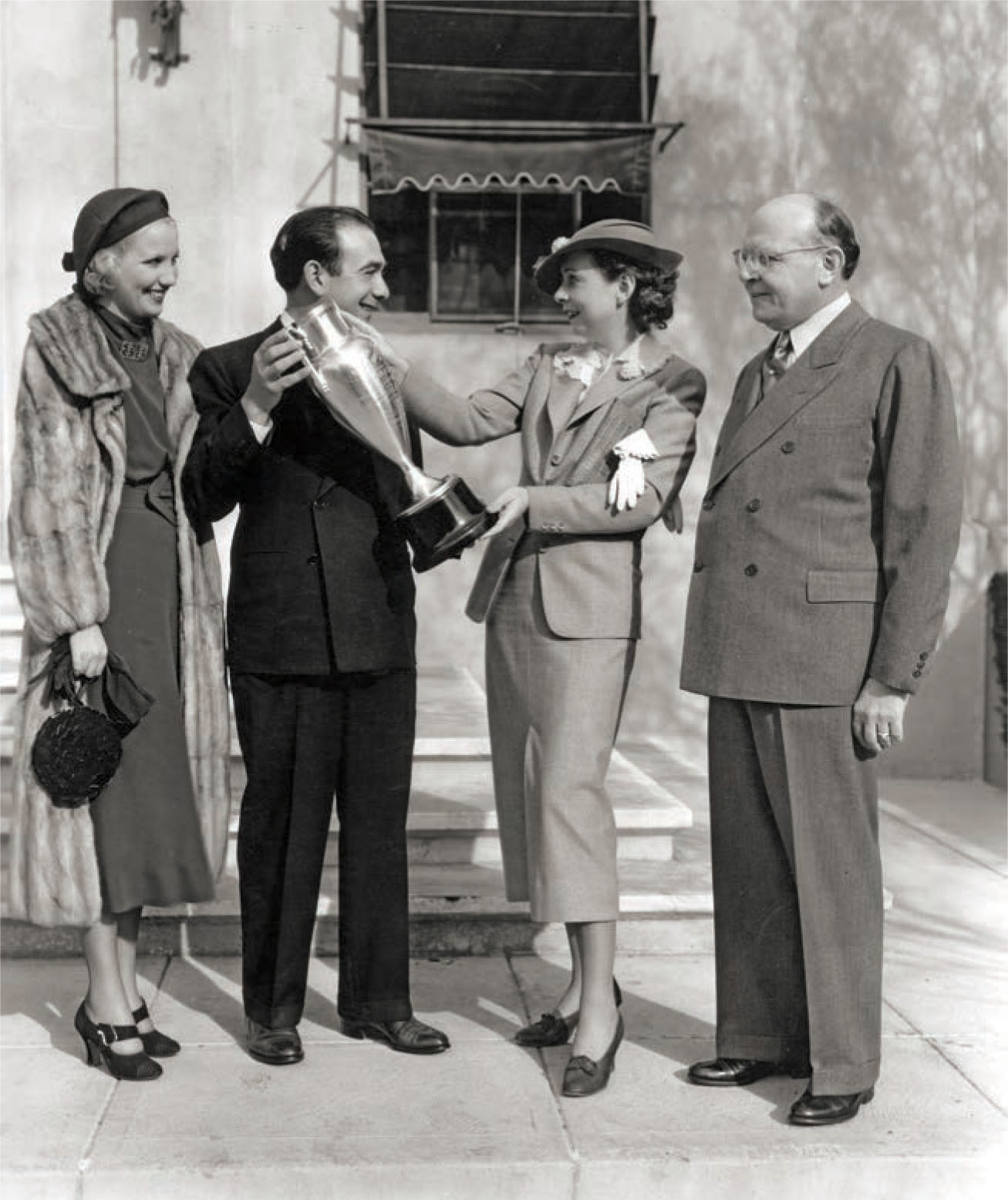Though she designed for nearly 150 films, Oscar winner Gwen Wakeling’s most memorable costume came from her brief foray into television, designing Barbara Eden’s pink-and-ruby harem outfit for the pilot episode of I Dream of Jeannie (1965).
From robes for biblical epics to tailored business suits for 1940s films noir, Wakeling designed it all. And unlike many designers of her era, she dressed an equal number of men and women. “I’ll tell you a little secret, men are vain creatures too,” she once said. “In my work, I design for them quite as often as I design for women. They are not so unconcerned about their silhouettes as you might imagine them to be. It’s fun to dress them up in a costume, because like the saying goes, ‘there’s something about a man in uniform,’ and I say there’s something about a man in a period or foreign costume, that is even more romantic.” She dressed handsome English actor Robert Donat in The Count of Monte Cristo (1934) and designed for swashbuckler Tyrone Power in ten films, including Son of Fury (1942).
Gwendolyn Sewell Wakeling was born on March 3, 1901, in Detroit, Michigan, to Otty and Edith Gilmour Wakeling. Otty was an itinerant mining engineer, moving his family to Seattle, then Prescott, Arizona, and finally Los Angeles. Wakeling had no formal training in costume design and was entirely self-taught. Her first job after high school was making fashion sketches for a department store. She began her film career helping Adrian to design the wardrobe for Cecil B. DeMille’s The King of Kings (1927). That same year, she married set designer Burgess Beall. In 1928, Wakeling worked at Pathé Exchange studio, continuing until it became RKO Pathé Pictures. There, she designed for stars Pola Negri in A Woman Commands (1932), Constance Bennett in Lady with a Past (1932), and Ginger Rogers in Carnival Boat (1932). She moved to Fox Film Corporation in 1933, where she helped shape Shirley Temple’s image, designing for her in fourteen films. She also created wardrobes for Drums Along the Mohawk (1939), The Grapes of Wrath (1940), and How Green Was My Valley (1941).
Wakeling’s husband died in 1940, and she became seriously ill the following year, when her appendix ruptured. Those stresses led Wakeling to leave 20th Century-Fox and open a salon with fellow designer Royer. She married writer Henry J. Staudigl in 1942. The two had worked together on Drums Along the Mohawk in 1939, when Staudigl consulted on color. Though their marriage lasted, her venture with Royer failed quickly. Wakeling returned to films as a freelance designer, working sporadically at first. She designed Cover Girl (1944) at Columbia before returning to work with Cecil B. DeMille on Unconquered (1947) and Samson and Delilah (1949). She received an Oscar for Samson and Delilah, shared with co-designers Edith Head, Dorothy Jeakins, Elois Jenssen, and Gile Steele.
In 1958, Wakeling worked with Temple again, designing thirteen one-hour episodes of Shirley Temple’s Storybook for NBC. Because of small budgets, most costumes were rented from Western Costume, with adaptations improvised as needed. “I remember [director] Mitchell Leisen hand-stenciling things on clothes,” costumer Margo Baxley remembered. During the 1950s and 1960s, Wakeling freelanced for RKO, Warner Bros., and Benedict Bogeaus Productions. In the late 1960s, Wakeling designed costumes for NBC and for the Los Angeles Civic Light Opera, including productions of Kiss Me, Kate (1964), The Student Prince (1966), and Show Boat (1967). Wakeling died on June 16, 1982, in Los Angeles. Staudigl died a dozen years later, on January 31, 1995.

Rita Hayworth in a Gwen Wakeling costume for My Gal Sal (1942).

A Gwen Wakeling sketch for Virginia Mayo in Pearl of the South Pacific (1955).

Henry Fonda in The Grapes of Wrath (1940).

Gwen Wakeling (second from right) receives the silver trophy award given by the Associated Apparel Manufacturers of Los Angeles, 1936.

Lana Turner in The Prodigal (1955).